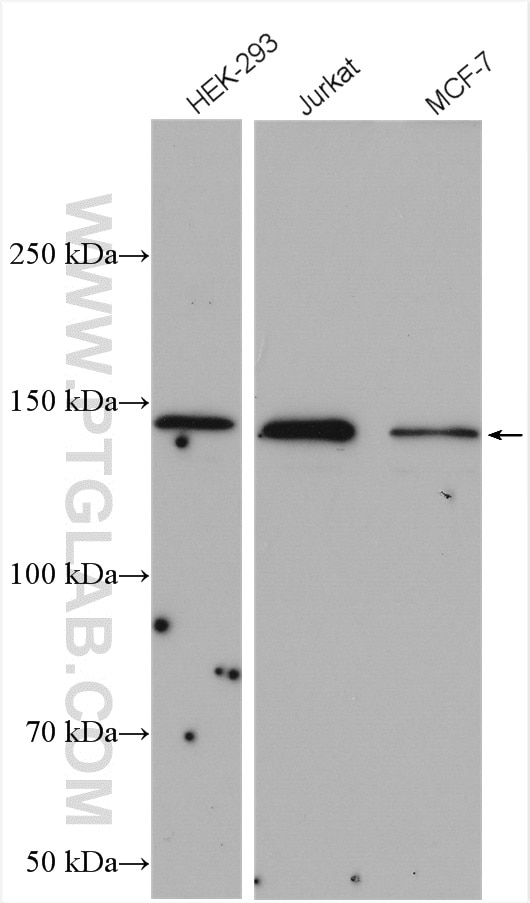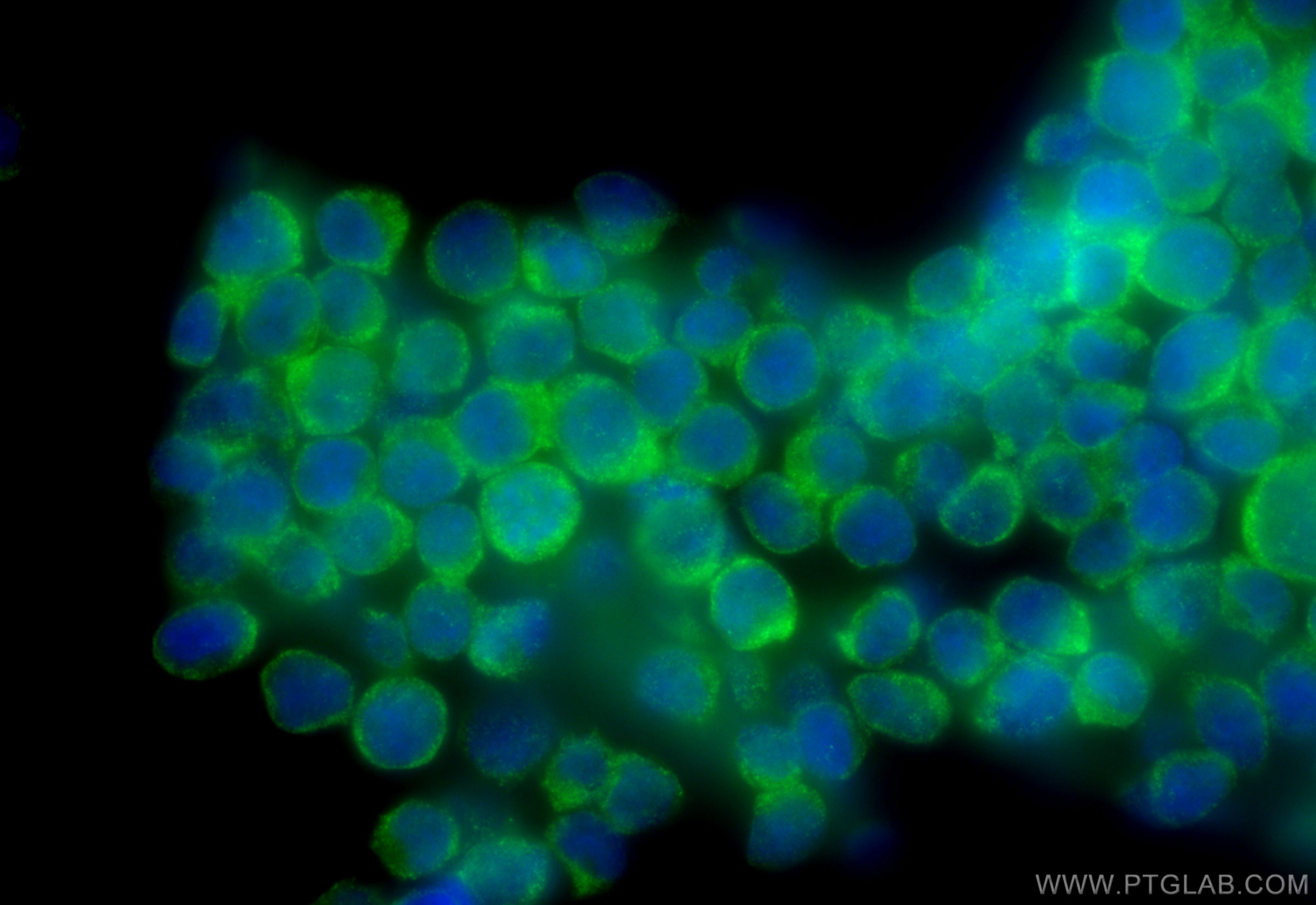Anticorps Polyclonal de lapin anti-PLCG1
PLCG1 Polyclonal Antibody for WB, IF/ICC, ELISA
Hôte / Isotype
Lapin / IgG
Réactivité testée
Humain et plus (1)
Applications
WB, IF/ICC, ELISA
Conjugaison
Non conjugué
N° de cat : 28362-1-AP
Synonymes
Galerie de données de validation
Applications testées
| Résultats positifs en WB | cellules HEK-293, cellules Jurkat, cellules MCF-7 |
| Résultats positifs en IF/ICC | cellules Jurkat, |
Dilution recommandée
| Application | Dilution |
|---|---|
| Western Blot (WB) | WB : 1:1000-1:4000 |
| Immunofluorescence (IF)/ICC | IF/ICC : 1:200-1:800 |
| It is recommended that this reagent should be titrated in each testing system to obtain optimal results. | |
| Sample-dependent, check data in validation data gallery | |
Applications publiées
| WB | See 2 publications below |
Informations sur le produit
28362-1-AP cible PLCG1 dans les applications de WB, IF/ICC, ELISA et montre une réactivité avec des échantillons Humain
| Réactivité | Humain |
| Réactivité citée | rat, Humain |
| Hôte / Isotype | Lapin / IgG |
| Clonalité | Polyclonal |
| Type | Anticorps |
| Immunogène | PLCG1 Protéine recombinante Ag27218 |
| Nom complet | phospholipase C, gamma 1 |
| Masse moléculaire calculée | 149 kDa |
| Poids moléculaire observé | 149 kDa |
| Symbole du gène | PLCG1 |
| Identification du gène (NCBI) | 5335 |
| Conjugaison | Non conjugué |
| Forme | Liquide |
| Méthode de purification | Purification par affinité contre l'antigène |
| Tampon de stockage | PBS with 0.02% sodium azide and 50% glycerol |
| Conditions de stockage | Stocker à -20°C. Stable pendant un an après l'expédition. L'aliquotage n'est pas nécessaire pour le stockage à -20oC Les 20ul contiennent 0,1% de BSA. |
Informations générales
Phosphoinositide phospholipase C-gamma-1 (PLCG1) which belongs to the phosphoinositide-specific phospholipase C (PLC) family, is activated by many extracellular stimuli including hormones, neurotransmitters, and growth factors and modulates several cellular and physiological functions necessary for tumorigeneses such as cell survival, migration, invasion, and angiogenesis by generating inositol 1,4,5-triphosphate (IP3) and diacylglycerol (DAG) via hydrolysis of phosphatidylinositol 4,5-biphosphate (PIP2) (PMID: 9242915). Phosphorylation is one of the key mechanisms that regulate the activity of PLC. PLCγ is activated by both receptor and non-receptor tyrosine kinases (PMID: 2472218). PLCγ forms a complex with EGF and PDGF receptors, which leads to the phosphorylation of PLCγ at Tyr771, 783, and 1248 (PMID: 1708307). It has also been shown that PKA-mediated phosphorylation at Ser1248 is inhibitory to PLCγ1 tyrosine phosphorylation and phospholipase activity in CD3-treated Jurkat cells (PMID: 1370476), suggesting that Ser1248 may be an allosteric regulator of PLCγ1 activity.
Protocole
| Product Specific Protocols | |
|---|---|
| WB protocol for PLCG1 antibody 28362-1-AP | Download protocol |
| IF protocol for PLCG1 antibody 28362-1-AP | Download protocol |
| Standard Protocols | |
|---|---|
| Click here to view our Standard Protocols |
Publications
| Species | Application | Title |
|---|---|---|
Cell Oncol (Dordr) The SLITRK4-CNPY3 axis promotes liver metastasis of gastric cancer by enhancing the endocytosis and recycling of TrkB in tumour cells | ||
Brain Res Bull Role of BDNF-TrkB signaling in the improvement of motor function and neuroplasticity after ischemic stroke in rats by transcranial direct current stimulation |



